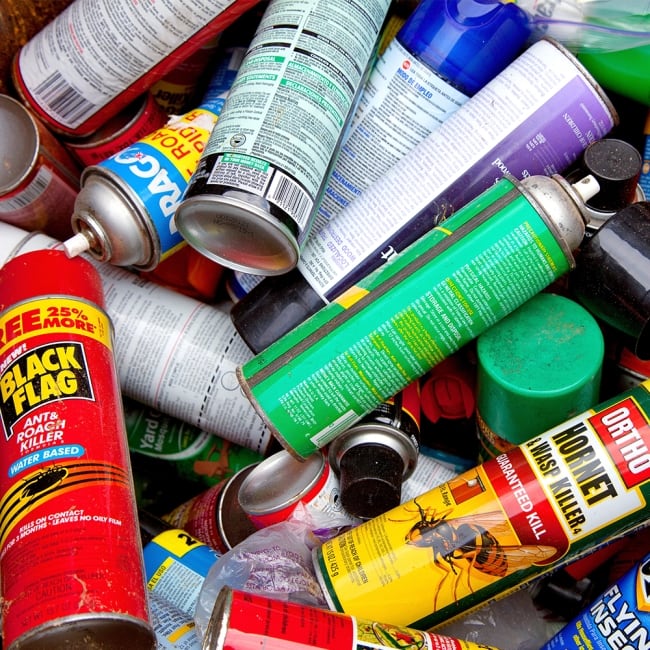- cleaning fluids
- aerosol containers
- expired medicine
- you name it
Going through the moving checklist, you recognize that these items should be thrown out and not moved with you into your new home.
Throwing these items like normal garbage would hurt the environment. There are proper ways to dispose of hazardous items that you find in your home.
But first, let’s define what household hazardous waste is.
Hazardous waste is anything that is corrosive, flammable, or poisonous. These products contaminate water and landfills and should never be poured down the drain or thrown out with your normal garbage.
Corrosive
These items can attack and chemically destroy exposed body tissues, including the skin of humans or animals. It can also damage or even destroy metal. Damage can happen as soon as it touches the skin, eyes, respiratory tract, digestive tract, or the metal. This would include bleach and household cleaners, rust removers, drainer cleaners, wax strippers, laundry stain removers, oven cleaners, and automotive lead-acid batteries.
Flammable
These items burn easily and pose serious risk of igniting with minimal spark or heat. This includes fuel oil, gasoline, motor oil, kerosene, camping fuel, paint thinners, lighter fluids, contact cement, oil-based paints, insect repellent, partially full aerosol containers, furniture cleaners, paint brush cleaners, and gasoline/oil mixtures.
Reactive/Explosive
These pressurized containers contain material that can poison or damage living organisms. This includes aerosol containers, propane tanks and butane fillers for cigarette lighters.
Poisonous
These items poison or damage living organisms: solvents, batteries, antifreeze, medications, pesticides, fertilizers, wood stains, preservatives, radiator coolants, compact fluorescent light bulbs, and any confirmed or suspected carcinogens.
Now that we have defined the different types of household hazardous waste, what falls into these categories?
- Antifreeze
- Batteries – all types
- Bleach
- Cleansers
- Fertilizers
- Fluorescent light tubes
- Compact Fluorescent Lamps (CFLs)
- Gasoline
- High pressure sodium light bulbs
- Medications
- Mercury thermometers/non-electric thermostats
- Nail polish and remover
- Oil
- Paint cans
- Pesticides (herbicides, fungicides and insecticides)
- Pool chemicals
- Propane helium tanks and cylinders
- Solvents
- Syringes/needles/medical sharps
How and where can exactly can you depose of hazardous waste properly?
- City of Toronto Drop-Off Depots: The City of Toronto runs 7 Transfer Stations which have drop-off depots used to collect, sort and transfer the City’s waste. You may dispose of your unwanted items to these depots.
- Request a pick-up of household hazardous waste by the City: If you do not have time to physically go and drop off your items, you can submit a request for a pick-up of household hazardous waste from your resident by the City.
- Community Environment Days: Community Environment Days are annual events held in each ward in Toronto, hosted by the local Councillor. Residents can attend these events and drop off special waste and talk with solid waste staff right in their own neighbourhood.
- Orange Drop: Orange Drop Program offers Ontario residents with free, safe and easy way to dispose of household products that involve special handling.
- Your local pharmacy: dispose of old medications, sharps and over-the-counter products to your local pharmacy. This way they are disposed of properly and keeping them out of the wrong hands.
With all your household hazardous waste disposed of properly, you will help prevent hazards to human and environmental health.






